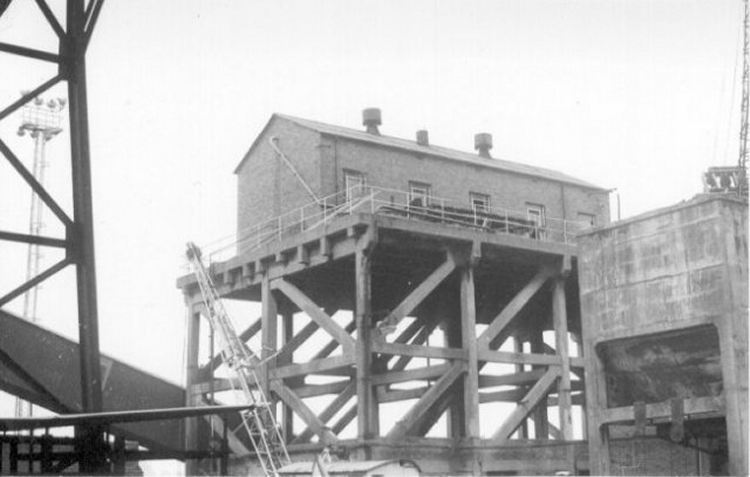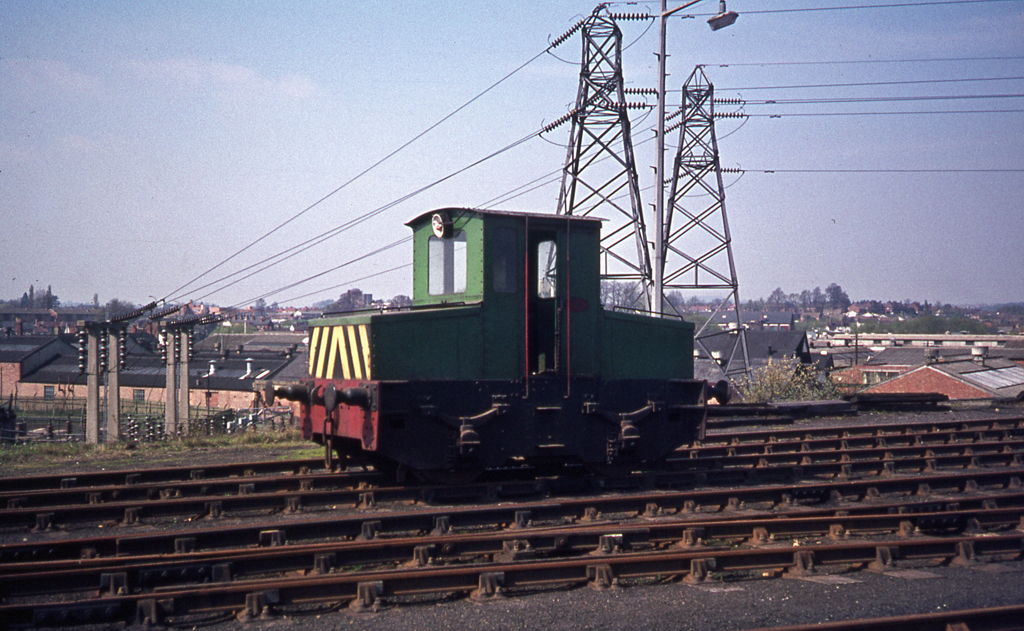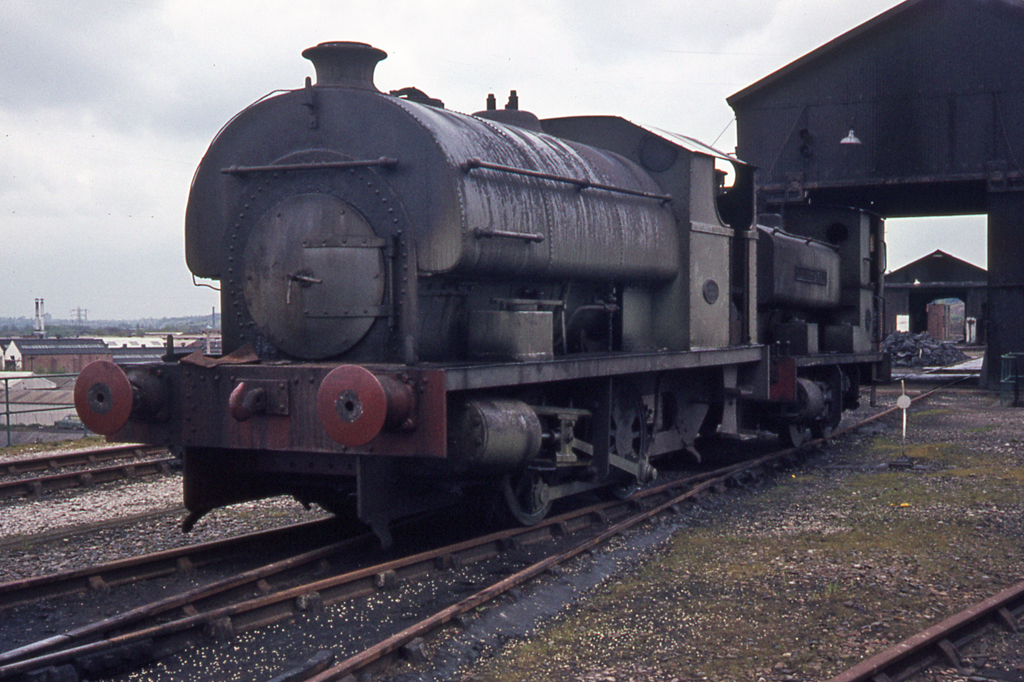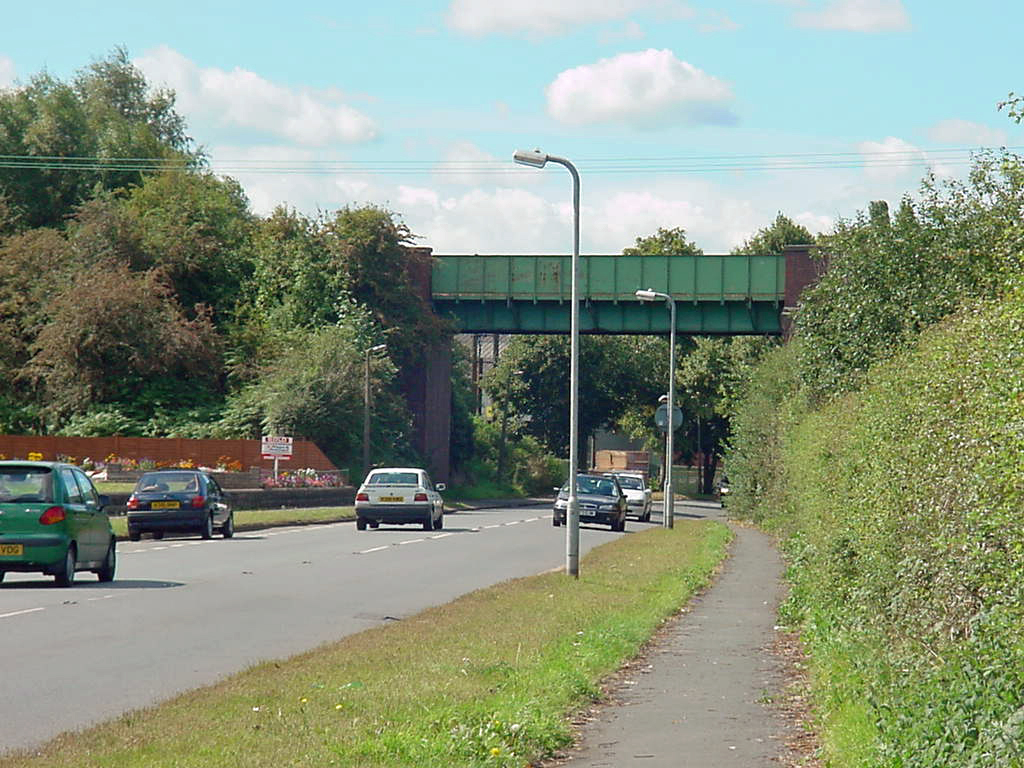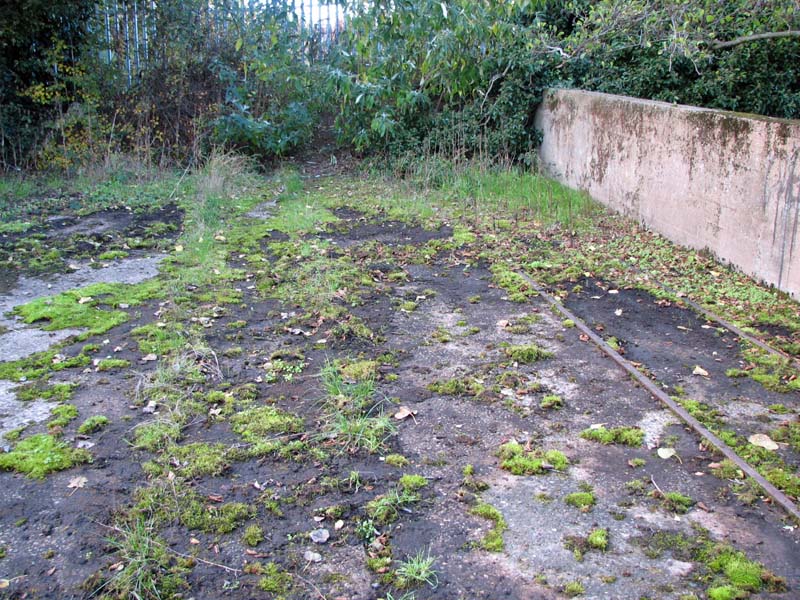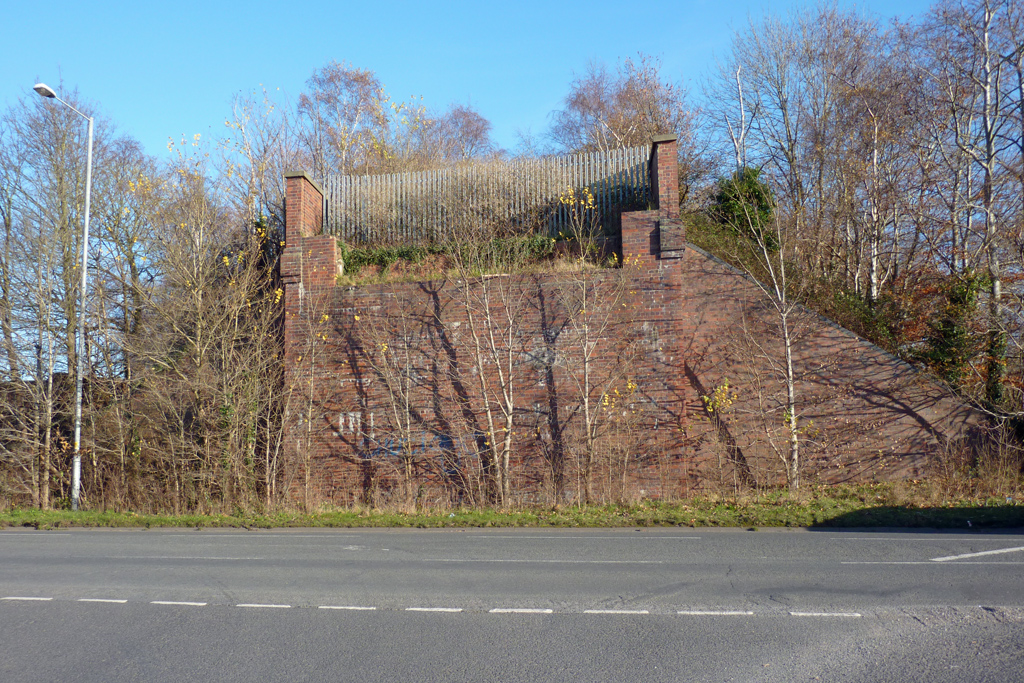Stourport is a medium sized town in Worcestershire, located just a couple of miles to the south of Kidderminster. Its history can be traced back to the days when, then named Lower Mitton, it was but a small hamlet. Fate was to play a part in the fortunes of the little hamlet, however, with the coming of the canal. The Staffordshire & Worcestershire Canal, one of the earliest works of the celebrated James Brindley, had been started in 1768, and finished in 1771, but nearby Bewdley refused to have anything to do with the "stinking ditch" and the canal was diverted. A water-borne trade developed, and the township - which changed its name to Stourport - grew with the construction of wharves, warehouses, and housing. These days the town is frequented by narrow boat enthusiasts who moor at the town's attractive canal basin; whilst the preserved Severn Valley steam railway runs past the northern outskirts. Stourport's electric power requirements are supplied via the National Grid these days, but up to the 1980s they had their own power station.
The Shropshire & Worcestershire Electric Power Company was established under its own special Act of Parliament in 1903. An extension Act of 1905 increased the company's power and lighting coverage to an overall area of 3,766 square miles extending into ten counties, and the Company's name was extended to The Shropshire, Worcestershire, & Staffordshire Electric Power Company. Their principal power station was built at Smethwick, with supplies of electricity first being provided in 1908. By the era around World War One supplies were being provided to several local towns, such as Dudley, Halesowen, and Oldbury. By 1920 they had some 3,000 customers but, as the local populace got used to the new-fangled wonder, this expanded twelve-fold by 1930, and they had 109,000 customers by 1937.
The Company quickly realised that their existing generating facilities were nowhere near adequate for the booming demand and they built further power stations. Acts of 1918 and 1921 authorised a power station at Stourport, an ideal 32 acre site having been found at the head of the navigable part of the River Severn (from which cooling waters could be extracted) and close to the confluence of that river and the River Stour. The aforementioned canal ran close by, which was perfect for coal deliveries, and able to provide a link to the Birmingham Canal Navigation and other midlands canal systems. Work began on the site in 1923, and the first supplies - to neighbouring Kidderminster - were provided on 1 April 1926. The power station (at grid reference SO 816709) was officially opened by Stanley Baldwin, Prime Minister, on 2 June 1927.
The installation initially comprised two 18,000kw turbo-alternator sets, with four 60,000 lb/hour Stirling boilers. Ever increasing demand, coupled with the Company's rural electrification programme, led to a further 20,000kw set being installed in 1929, in which year the Company was incorporated into the Edmundsons Electricity Corporation - under whose control the station remained until Vesting Day, 1 April 1948, when electricity was nationalised under control of the British Electricity Authority. In 1931 a 30,000kw set was installed, together with extra boiler capacity, whilst in 1936 a second boiler house was erected.
As was natural in that era the power station was coal fired. A small amount of coal was brought in by road from local collieries, being weighed at the entrance. The lorries then offloaded directly into hoppers feeding conveyor belts to either the boiler house or storage grounds. With the exception of these deliveries, however, all other coal was brought in by a 2ft 6in gauge railway. This coal was brought along the canal in narrow boats of thirty tons capacity, and via the River Severn in one hundred ton barges normally containing best Welsh steam coal. At the company's private wharf two jib-cranes (or derricks) were utilised to unload the barges, and they discharged into hoppers feeding conveyor belts. These took the coal above Severn Road and discharged into more hoppers situated above the 2ft 6in gauge railway tracks, upon which were waiting rows of small coal trucks.
To operate the traffic the power station obtained, in 1925, two four-wheel battery-electric locomotives from English Electric (W/Nos 688 and 689). They were painted in a dark green livery and were numbered 1 and 2. The lettering 'English Electric Co Ltd/Dick Kerr system' was inscribed on their controllers. They were small, low, locomotives, with outside frames practically down to track level, and unusually they were fitted with wooden block buffers. They were fitted with a very cramped end-cab - which required contortionists (or midgets) for drivers - and were powered by rechargeable heavy duty storage batteries. A fitting shop, with two tracks, was provided for stabling and servicing the locos, and to provide battery recharging facilities.
The background to the purchase of these locomotives is unknown, but it may be significant that the English Electric Company supplied the original station generators. Battery powered locos were in their infancy when Stourport placed their order in the early 1920s; indeed English Electric had only built a few such units from 1920 onwards. It would have been more logical in those days to use narrow gauge steam locomotives, particularly with the site's rural location not creating any environmental problems, and with coal supplies being readily available. However the decision was reached, and it proved to be quite an inspired piece of business, for the pair gave years of reliable service, more than justifying their capital outlay.
Their basic duties were twofold. They were principally used to collect coal tubs from the wharf hopper, and trundle them past the coal stocking areas to the boiler house. Normally eight tubs at a time were moved, each weighing about half a ton, although they reputedly pulled over a dozen tubs at busy times, particularly during the Second World War. The coal was offloaded, passed through hoppers and a weighing machine, and thence ran by conveyor belt to the boiler house bunkers. Any coal not immediately required was diverted to another conveyor belt and stockpiled at the storage grounds. Their second duty was ash disposal. A large quantity of waste ash was produced when coal was burned in the boilers, and this was deposited into storage bunkers outside the boiler house. From there it was dropped into purchasers' lorries, or into narrow gauge wagons. The English Electric locos then transferred the tubs to the tip, or to the wharf for loading the ash into purchasers' water-borne transport.
Although the narrow gauge railway system was initially capable of handling the vast majority of the station's coal supplies, it was a very slow and involved operation. Larger capacities, as afforded by standard gauge, was the obvious solution. A small amount of rail-borne coal was already delivered to the Great Western Railway's (GWR) depot situated on the Severn Valley Railway about a mile from the power station. From there it was taken by lorry and dealt with as already described for road deliveries. It was decided to build a standard gauge branch line to connect with the GWR, this involving bridges over three public highways and the River Stour.
Mention of the Severn Valley Railway makes it pertinent to mention that this was the ORIGINAL railway of that name, of which part of the route is now taken over by the modern preserved steam railway company. The Severn Valley Railway of old curved north-westwards from Hartlebury (just east of Stourport) and ran on to Sutton Bridge Junction (just south of Shrewsbury), with running powers on into Shrewsbury itself. A special to mark the opening ran from Worcester Shrub Hill station on Friday 31 January 1862, with regular services commencing the following day. The line ran north through Bewdley and Bridgnorth. It was closed as a through route between Shrewsbury and Bridgnorth on 9 September 1963, when the southern section remained open to serve the colliery at Alveley, and Stourport Power Station, and for a railcar shuttle on the Hartlebury/Bewdley/Kidderminster triangle. Stourport and Bewdley stations closed on 5 January 1970, and thereafter the only portion of the Severn Valley Railway which remained open was the section from Hartlebury to Stourport Power Station.
The Stourport Power Station branch was originally constructed in 1940, with a trailing connection on to the SVR Down line. Trains bound for the power station were worked by locomotives allocated to Kidderminster (85D in BR days), until the closure of that shed in 1963. Ex-GWR 0-6-0 pannier tanks were originally regulars on the working, although from 1957 until the end of steam 0-6-2T number 6679 was a regular loco. Latterly, in BR diesel days, class 25s were typical motive power for the duty. Coal fulls were taken up the branch and left in a newly constructed bank of sidings, and empties were taken back down to the GWR. The installation of the standard gauge branch resulted in the power station's narrow gauge operations declining, the last coal delivered by canal being at the end of World War Two.
With the standard gauge branch in place, the next step for officials at the power station was to obtain their own shunting locomotives. Andrew Barclay W/No 2088 of 1940 was ordered for Stourport, but the new standard gauge facilities were not quite ready when the loco was completed, so it was delivered to Little Barford Power Station, Bedfordshire, on 28 May 1940. It was a fairly run-of-the-mill Barclay type, being named SIR THOMAS ROYDEN after a Director of Edmundsons. It was transferred to Stourport early in 1941, and was put to work in the new sidings. A second 0-4-0ST, named GENERAL WADE HAYES (Bagnall W/No 2665), was delivered new to the station in December 1942, and was fitted with 14in x 22in outside cylinders and 3ft 6in diameter driving wheels.
Meanwhile, the town of Stourport had continued to grow, with general engineering, carpets (particularly famous in nearby Kidderminster), porcelain and vinegar works providing jobs - and requiring electric power. Under Edmundsons' management, the capacity of the power station was increased, and by the 1930s it had reached 180,000kw. Future development required that a second station was desirable and, in 1943, authorisation was obtained for a new 60,000kw station - to be built just to the east of the existing station, and to be called Stourport 'B'. The original station then became known as Stourport 'A'. With the new 'B' station new workshops, stores, and offices, and extra coal stocking grounds were provided, together with an extension to the narrow gauge railway to facilitate ash removal. Stourport 'B' was officially opened on 26 September 1950 by Admiral Sir William Tennant, Lord Lieutenant of the County of Worcestershire. A further 60,000kw unit was installed in 'B' and by the mid-1950s the whole site was brought up to 300,000kw capacity.
The two steam locomotives spent their lives working on a very small system, taking full coal wagons to the tipplers, and running the empties back to the exchange sidings. The single track branch line from the SVR crossed a river bridge, before fanning out into seven curved sidings. Another bridge, over the road, took two tracks into the power station itself. Beyond that point was the railway's most fascinating aspect, for the entire end part of the system was elevated, being constructed upon a sturdy concrete lattice gantry. The two tippler houses were on this structure, as was the locomotive shed. There was little spare room at the exchange sidings, and this may have been the reason why the expedient was taken of building the loco shed at the end of the gantry. It was built of brick, with a hipped roof and five windows down each side, and held two locomotives on its single road.
After soldiering on together for fifteen years the two steam locos were finally joined by another locomotive, being an 0-4-0ST with 14in x 22in outside cylinders, built by Peckett of Bristol to their W6 type. W/No 1893 was originally delivered new on 29 April 1936 to Ironbridge Power Station, Shropshire, where it was allocated GWR registration number 182 of 1937. It was transferred to Birchills Power Station, Walsall, in July 1951, and had arrived at Stourport by January 1958, although the actual date of the transfer is not known. A fourth locomotive later arrived at the site, having been built by Greenwood & Batley Ltd of Leeds, whose works was opposite the well-known Armley Gaol. They specialised in battery and electric locomotives, of which they ultimately built a total of 1367, most being narrow gauge models. They did build a small number of standard gauge locomotives, however, of which W/No 2000 was one. It was a 13 ton loco, despatched on 5 September 1945 to Worcester Power Station. It gave a normal drawbar pull of 2,500lbs on the level at 5mph, with a maximum pull of 5,000lbs, and it was equipped with: two 20hp electric motors, a drum type controller, a cab with sliding door at each side, and a foot-operated horn. Wagons for Worcester Power Station were shunted from Henwick yard by a GWR pannier tank, and W/No 2000 worked very successfully on the station's small, flat, railway system on the west bank of the River Severn, moving the wagons through the tippler house. After becoming redundant at Worcester, W/No 2000 was transferred to neighbouring Stourport in June 1968. The Stourport drivers tried it out, but found it could not pull as many wagons as their steamers, and they also thought its brakes were a little suspect. It only worked occasionally.
As was par for the course at all industrial locations, the management eventually decided the steamers were outdated and had to go. Bagnall W/No 2665 was scrapped in February 1968, whilst a visit to the station by the author on 11 May 1975 found the Peckett standing dead outside the shed, with the Barclay languishing inside, both officially retained as spare. On this date the Greenwood & Batley locomotive - painted bright green - was doing the shunting. Peckett W/No 1893 eventually moved to the Titanic Steamship Company, Ellerstone, Staffordshire in August 1977, and can now be found preserved at the GWR Museum, Coleford, Gloucestershire. Barclay W/No 2088 also moved to the Titanic Steamship Company in August 1977, later moving to Market Overton on 29 March 1979, and on to the Rutland Railway, Cottesmore, early in 1980.
The little battery-electric loco could not be expected to soldier on alone, however, and a 'Planet' four-wheel diesel mechanical (Hibberd W/No 3892 of 1958) was obtained from Leicester Power Station about January 1976. It was painted green and carried the running number 1 in yellow on the cabside.
By this time the power station itself was in decline, and the 'Planet' was destined for a relatively short stay. The No.1 boiler house was disused from the late 1960s, and the No.2 boiler house from the early 1970s, boiler ash latterly being taken away in lorries. The narrow gauge's primary function was thus taken away and, although there were very rare workings for a few years, the system was completely abandoned in 1979. The canal basin where the barges of coal were unloaded was filled in, and now belongs to a larch lap fence-making company. The English Electric locos were stored in the boiler house, and were found there by the author on 25 September 1983, with seventeen side tipping skips (built by Allens of Tipton) dumped nearby. They were all scrapped about 1984. The original 'A' station was closed in 1976, and soon had one of its chimneys blown up. It was demolished in 1984, and the 'B' station was scheduled to cease generating on 30 March 1984. Closure of the power station brought to an end freight workings on the last section of the old Severn Valley Railway. Greenwood & Batley 2000 was purchased for preservation and moved, about August 1981, to the Steamport Railway Museum, Southport, where it remains to this day. The Planet was the last standard gauge locomotive on site, moving (via Tilsley & Lovett Ltd of Trentham) to ICI Hindlow, Derbyshire, in September 1981. When viewed on 28 May 1990 the entire site had been cleared and a housing estate was growing in its place.
In conclusion I wish to thank Dave Allsop, A.T. Barfield, the erstwhile CEGB, Bob Darvill (Industrial Railway Society), and Robert Pritchard for their help during the preparation of this article.
Following the closure of the power station the site was redeveloped into a housing estate.

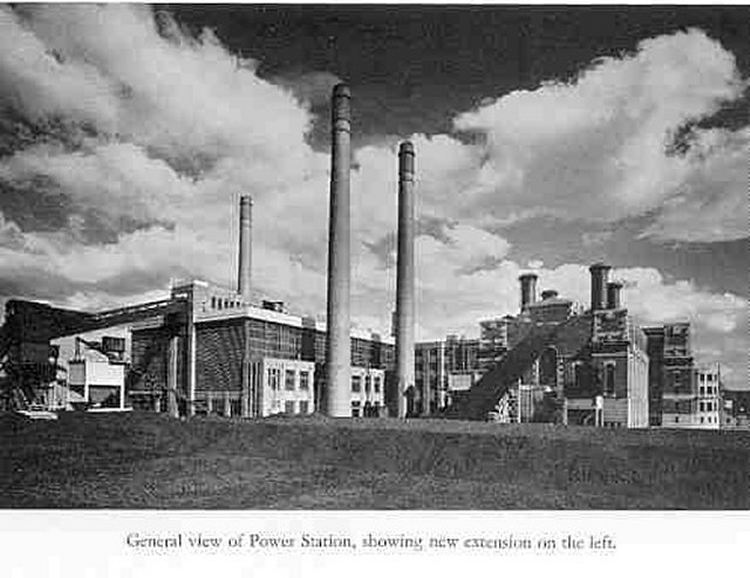 Photograph from the collection of Adrian Booth.
Photograph from the collection of Adrian Booth.
